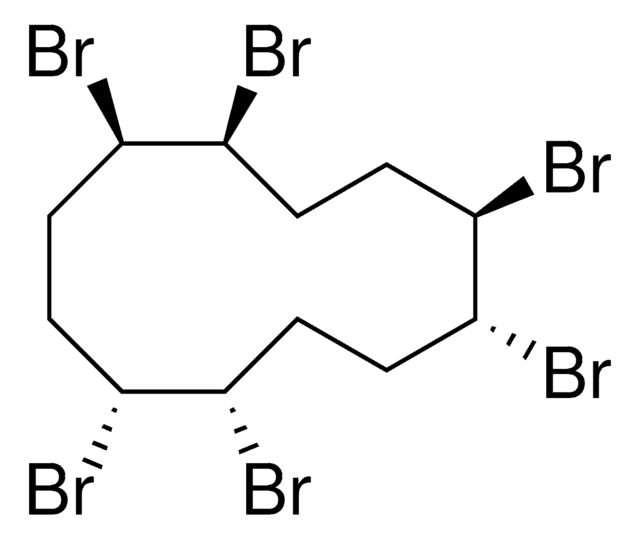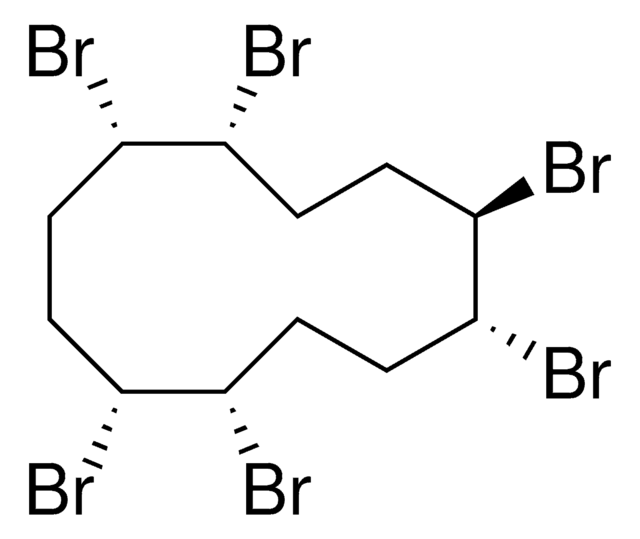144762
1,2,5,6,9,10-Hexabromocyclododecane
95%
Sinonimo/i:
HBCD, HBCDD
About This Item
Prodotti consigliati
Saggio
95%
Solubilità
acetone: soluble 25 mg/mL, clear, colorless to light yellow
water: slightly soluble
Stringa SMILE
BrC1CCC(Br)C(Br)CCC(Br)C(Br)CCC1Br
InChI
1S/C12H18Br6/c13-7-1-2-8(14)10(16)5-6-12(18)11(17)4-3-9(7)15/h7-12H,1-6H2
DEIGXXQKDWULML-UHFFFAOYSA-N
Cerchi prodotti simili? Visita Guida al confronto tra prodotti
Descrizione generale
Applicazioni
Azioni biochim/fisiol
Avvertenze
Warning
Indicazioni di pericolo
Consigli di prudenza
Classi di pericolo
Aquatic Acute 1 - Aquatic Chronic 1 - Lact. - Repr. 2
Codice della classe di stoccaggio
11 - Combustible Solids
Classe di pericolosità dell'acqua (WGK)
WGK 3
Punto d’infiammabilità (°F)
Not applicable
Punto d’infiammabilità (°C)
Not applicable
Dispositivi di protezione individuale
Eyeshields, Gloves, type N95 (US)
Elenchi normativi
Forniamo informazioni su eventuali restrizioni prevalentemente per i prodotti chimici. Per altre tipologie di prodotto siamo in grado di fornire soltanto informazioni limitate. Nessuna segnalazione significa che nessuno dei componenti è citato in un elenco. È dovere dell’utilizzatore assicurarsi che il prodotto venga impiegato in maniera sicura e a norme di legge.
EU REACH SVHC Candidate List
EU REACH Annex XIV (Authorisation List)
Scegli una delle versioni più recenti:
Possiedi già questo prodotto?
I documenti relativi ai prodotti acquistati recentemente sono disponibili nell’Archivio dei documenti.
I clienti hanno visto anche
Filtri attivi
Il team dei nostri ricercatori vanta grande esperienza in tutte le aree della ricerca quali Life Science, scienza dei materiali, sintesi chimica, cromatografia, discipline analitiche, ecc..
Contatta l'Assistenza Tecnica.













